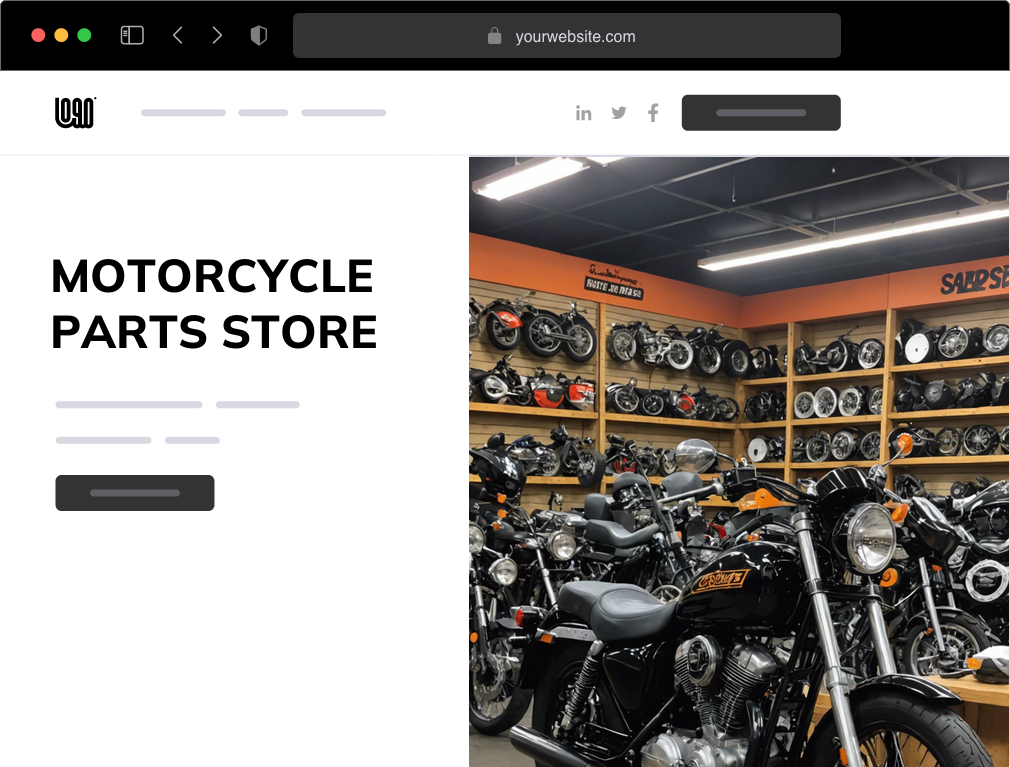Release Performance with Premium Motox Parts NZ Available Below
Release Performance with Premium Motox Parts NZ Available Below
Blog Article
Understanding the Crucial Parts of a Motorbike: A Comprehensive Guide for Lovers
For motorcycle fanatics looking to boost their riding experience and ensure their bikes run smoothly, comprehending the essential elements of a motorcycle is vital. Each component, from the engine's complex operations to the important role of the braking mechanisms, not just impacts efficiency however likewise security and comfort.
Engine Parts

The camshaft plays a vital duty in regulating the timing of the engine's shutoffs, guaranteeing the precise opening and closing necessary for effective fuel and air consumption, as well as exhaust expulsion. This timing is essential to maintaining ideal engine performance and efficiency. In addition, the carburetor or gas injection system, relying on the bike design, is accountable for mixing air with fuel in the appropriate ratio for combustion.
The cooling system, either air or liquid-based, functions to keep the engine's temperature within functional limitations, stopping overheating and making sure longevity - moto parts nz. Each part, carefully developed and incorporated, adds to the smooth operation of the engine, specifying the motorcycle's power outcome and overall efficiency
Transmission System
Important to the bike's capability, the transmission system makes sure reliable power transfer from the engine to the wheels. This system comprises several essential components, including the clutch, transmission, and final drive, each playing an important role in translating the engine's power right into motion. The clutch, typically operated by a hand bar, offers to disengage the engine and engage from the transmission, enabling smooth equipment modifications and controlled velocity.
The gearbox, usually described as the transmission proper, has a collection of equipments that motorcyclists can by hand move through to adjust the bike's rate and torque outcome. These equipments are organized in a sequence that makes it possible for the motorcycle to speed up efficiently and maintain ideal engine performance across numerous speeds. A lot of bikes utilize a consecutive gearbox, calling for the cyclist to shift gears in an established order.
Braking Mechanisms
While recognizing the transmission system is key to utilizing a motorbike's power, just as essential is the ability to regulate and stop that power successfully, which is where braking devices come right into play. Brakes are important for safety and security and performance, providing the biker with the required control to navigate different surfaces and conditions. Commonly, motorbikes feature 2 kinds of braking systems: disc brakes and drum brakes.
Disc brakes are extra prevalent in contemporary motorcycles due to their exceptional performance. They consist of a brake disc, caliper, and pads. When turned on, the caliper squeezes the brake pads against the spinning disc, transforming kinetic energy right into warmth, consequently slowing down the wheel. This system supplies far better warm dissipation, constant efficiency, and improved quiting power, especially in damp conditions.
Conversely, drum brakes, though much less typical, are still discovered in some bikes. They function by pushing brake footwear versus the inner surface of a drum connected to the wheel. While typically much less effective in warmth dissipation and stopping power, drum brakes are less complex and much more cost-effective.
Recognizing these stopping systems' nuances enables cyclists to keep their motorcycles correctly and value the engineering that makes sure safe and efficient stopping.
Suspension and Guiding
Suspension and guiding systems are important parts that significantly influence a bike's handling and trip comfort. The shock dirt bike tank bag absorber, consisting of forks at the front and shock absorbers at the back, absorbs roadway abnormalities, boosting security and control. Front forks, upside down or generally telescopic, compress and rebound to mitigate influences, while back shock absorbers maintain tire contact with the roadway, crucial for grip and safety.
Guiding, centered around the handlebars, links the rider to the bike's directional control. The steering head bearings guarantee smooth procedure, permitting exact maneuverability. Correct placement and maintenance of these bearings are critical for predictable steering reaction and lowering rider tiredness.
The suspension's adjustability is an additional essential facet; preload, damping, and rebound setups enable personalization to suit various riding designs and conditions. This flexibility is vital for optimizing performance, whether browsing city roads or dealing with rugged tracks. Advancements like electronic suspension systems use real-time adjustments, improving adventure high quality throughout diverse surfaces.

Electrical Equipments
After guaranteeing a smooth and regulated trip through reliable suspension and guiding systems, focus transforms to the electrical systems, an essential facet of modern-day bikes. These systems play an essential motorcycle touring gear duty not just in starting the engine yet additionally in powering different elements that boost the performance and safety and security of the motorbike.
At the heart of a motorbike's electric system is the battery, which stores electric power necessary for starting the engine and powering complementary systems - motorcycle parts nz. The alternator or generator, paired with the rectifier-regulator, ensures the battery continues to be billed while the motorcycle is in operation, converting mechanical energy into electrical power and maintaining voltage levels
The ignition system, one more important component, is accountable for firing up the air-fuel blend in the engine's cyndrical tubes. Modern motorcycles usually utilize a digital ignition system, supplying better efficiency and integrity compared to typical systems.
Illumination systems, consisting of fronts lights, tail lights, and indications, are also vital, ensuring presence and safety for the motorcyclist. Extra electronic components such as sensing units, control devices, and presents add to innovative features like gas shot monitoring, anti-lock braking systems (ABS), and digital dashboards, additionally improving the riding experience.
Verdict
A thorough comprehension of a motorcycle's crucial parts, consisting of the engine, transmission system, braking systems, suspension, steering, my site and electric systems, is essential for enthusiasts intending to optimize security, efficiency, and comfort. Mastery of these elements allows for educated choices relating to maintenance and upgrades, inevitably improving the riding experience. By integrating this knowledge, motorcyclists can ensure their motorcycles run at peak performance and reliability, therefore making the most of both pleasure and longevity of their vehicles.
For motorcycle lovers looking to elevate their riding experience and ensure their bikes run smoothly, recognizing the important parts of a bike is paramount.Integral to the motorcycle's functionality, the transmission system makes sure effective power transfer from the engine to the wheels.While comprehending the transmission system is crucial to using a motorbike's power, just as important is the ability to manage and stop that power properly, which is where stopping systems come right into play. Normally, bikes include two kinds of braking systems: disc brakes and drum brakes.
A complete comprehension of a motorbike's crucial components, including the engine, transmission system, stopping mechanisms, suspension, steering, and electric systems, is important for fanatics intending to enhance safety, performance, and convenience.
Report this page